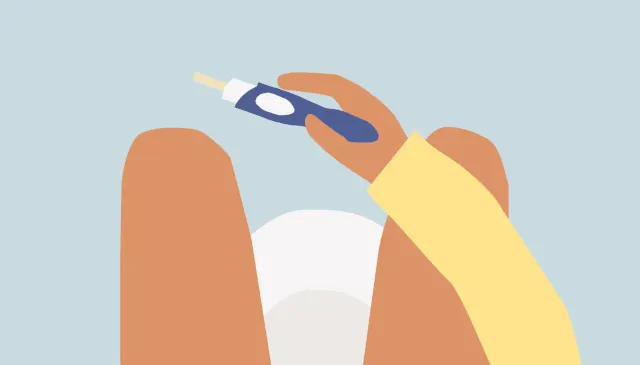Here's what we'll cover
Here's what we'll cover
If you find yourself unexpectedly pregnant, it’s important to know your options so you can make the best decision for yourself.
Depending on how far along your pregnancy is, your options may differ. Overall, the two main choices are to continue a pregnancy and give birth, or to terminate your pregnancy. If you choose to continue the pregnancy, you may decide to keep and raise the baby or consider other options like adoption. If you decide to terminate your pregnancy, there are different options, which may vary based on your health status and location.Read on to learn more.
Continuing the pregnancy
If you decide to continue your pregnancy, it’s important that you visit a healthcare provider in person. Look for an obstetrician (OB), a doctor specializing in pregnancy. If you haven’t already, it’s essential to start taking a prenatal supplement. These supplements contain vitamins like folate and iron, which are necessary for keeping you and the baby healthy.
When you visit a healthcare provider, they will perform some tests, including an ultrasound in which an ultrasound wand will be placed inside your vagina to let them see the fetus and ensure it’s in the correct location. They will also ask you about any medications you are taking and your health history so they can adjust your treatments if necessary.
Then, they will set up a series of appointments for you so they can keep track of your health and your baby's health. These will include blood pressure evaluations, additional ultrasounds, and more, depending on your health history, age, and other factors.
You can continue a pregnancy and keep the baby, but if you don’t want to keep the baby, there are other options, too. You can choose adoption, including a closed adoption, where you decide not to have contact with the child and their adoptive parent(s), or an open adoption, where you can choose what level of involvement you might like to have in their lives. You can put your baby up for adoption through an agency that will help you navigate the adoption process, or privately with a family directly.
Ending the pregnancy
If you decide that you do not wish to continue the pregnancy, there are two main ways to stop a pregnancy: abortions carried out in clinics using surgical methods, and abortion pills. The choice is often based on how far along the pregnancy is. Both methods are safe, effective, and very common.
Abortion medications
The medications used to end a pregnancy are effective up until around the 11th week of pregnancy. These medications are available in clinics and online, but access may be restricted in some states.
Two medications are used together to stop a pregnancy: mifepristone and misoprostol. Mifepristone works by blocking a hormone called progesterone, which is required to support a pregnancy. By blocking progesterone, you can end a pregnancy. The second medication, misoprostol, stimulates the uterus to release the pregnancy. Together, these medications are about 95–98% effective at safely ending a pregnancy up to the 9th week of gestation (Gatter, 2015). While they become less effective as the pregnancy progresses beyond that point, they are still around 85% effective for people who are 10–11 weeks pregnant, and a second dose can bring those numbers up to 97% (Carbonell, 1999).
Surgical pregnancy termination
About half of pregnancy terminations in the US are surgical abortions (also known as “dilation & curettage” or D&C). Surgical pregnancy termination can be performed into the second trimester of pregnancy and beyond, depending on the circumstance, making it a more favorable option beyond 11 weeks of pregnancy. It may also be a better option if someone tries medications, but they don’t work. This procedure can be done in a hospital or a clinic with local anesthesia (meaning you don’t necessarily need to be put to sleep for the treatment, though your healthcare provider will decide what’s best).
During the procedure, the opening of the uterus, called the cervix, will be dilated, or opened further, using specialized tools and/or medications. Then, a separate tool is used to remove the fetus.
How to get an abortion
Since abortion options vary by state, health status, and how far along the pregnancy is, it’s important to learn about your options. Planned Parenthood is a helpful resource if you would like to learn more. You can go to https://www.abortionfinder.org/ to see what options there are near you. Even if you live in a state where abortion is not legal, it is legal to travel out of state to get an abortion. There are also various organizations that will help pay for your travel and medical expenses if you need to leave your state to get an abortion.
While an unwanted pregnancy can be daunting, there is a wide range of safe and effective treatments available, as well as organizations that are entirely dedicated to providing safe access to those services.
DISCLAIMER
If you have any medical questions or concerns, please talk to your healthcare provider. The articles on Health Guide are underpinned by peer-reviewed research and information drawn from medical societies and governmental agencies. However, they are not a substitute for professional medical advice, diagnosis, or treatment.
Carbonell, J. L., Varela, L., Velazco, A., et al. (1999). Vaginal misoprostol for abortion at 10-13 weeks' gestation. The European Journal of Contraception & Reproductive Health Care: The Official Journal of the European Society of Contraception , 4 (1), 35–40. Retrieved from https://pubmed.ncbi.nlm.nih.gov/10367194/
Gatter, M., Cleland, K., & Nucatola, D. L. (2015). Efficacy and safety of medical abortion using mifepristone and buccal misoprostol through 63 days. Contraception , 91 (4), 269–273. Retrieved from https://pubmed.ncbi.nlm.nih.gov/25592080/









